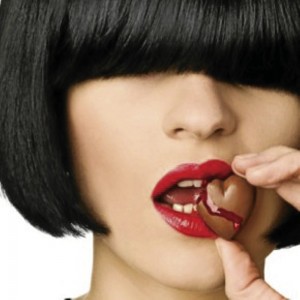
If you think you’ve got your beauty rules all figured out, don’t be too sure.
Have you ever gotten a pimple and blamed it on that chocolate bar you had the other day? Or resisted the urge to pluck a single strand of white hair because you believe seven more of its friends will surely appear? What about that myth that sleeping with your hair wet would lead to a headache? Or—wait, that seems to be true sometimes, right?
As new discoveries are being made everyday about skin and hair care, it is only right to dispel old beliefs and get updated. And, lately, more and more beauty verities are quickly becoming myths. These could be things you’ve known your whole life, like advice given by your grandmother or a beauty tip a friend taught you back in high school. Some myths are even passed on for generations, and seem to take on a life of its own.
Chocolates and pimples
Fact or fiction? Eating chocolate, chips and oily food can cause pimples.
FICTION. “There’s no food that can cause pimples,” says dermatologist of Facial Care Center Dr. Shyla Valdez. The medical cause of pimple formation generally involves hormones: the higher your hormone levels, the more likely it is you’ll get pimples. Then, bacteria residing inside the pimple can cause it to get inflamed.
The only time food can cause a skin reaction is when you’re allergic to it. “You can be allergic to a kind of food and will manifest that with pimples instead of getting the usual reaction, which is itchy, scaly flacks. But food does not cause pimples per se,” explains Valdez.
A possible reason why food is linked to breakouts? Hormones make you feel like eating more food.
“Before you get your period, you tend to break out, right? That’s due to the hormones, regardless of what you eat,” says Valdez.
Pore minimizers
Fact or fiction? You can make your pores smaller.
FICTION. If that pore minimizing cream seems to be working for you, then this shouldn’t be a myth, right? Not necessarily.
“When you apply anti-aging creams like something with vitamin A, tretinoin or retinoic acid, pores appear smaller, but, really, it’s the skin that tightens,” says Valdez. This means the diameter of each pore remains the same but it’s the dermis underneath the skin that feels tighter and firmer. Using a machine to “minimize pores” will also have the same effect, but it produces faster, more visible results than applying creams.
“A laser-resurfacing machine will destroy micro-columns of your dermis and the effect would be tightening of the skin and production of new collagen, so your pores will actually look smaller.”
And what about the practice of using steam to open pores and applying a cold towel to shrink them? Valdez says: “It’s not the pores that constrict, but the blood vessels that dilate. So whether you put something topical or introduce steam to your skin, it does not affect the size of your pores.”
White hair
Fact or fiction? Plucking white hair will cause them to multiply.
FICTION. There seems to be many theories about white hair and how it multiplies, and this myth, in particular, has plenty of believers. Teresa Cruz, hair expert at Svenson sets facts straight: “Melanocyte is responsible for the color of our hair and it may malfunction for whatever reason: age, stress or genetics. The white hair you pluck will just be replaced by another white hair, it will not multiply.”
But while plucking one white hair out will not trigger others to turn white, in a sense it is also not good to pull out your hair because it can lead to thinning (a far worse problem). An effective and less time-consuming method of hiding white hair is hair coloring. Not a bad alternative, as it gives us a reason to experiment with a new shade, or find one better suited to our skin tone.
Mix-and-match beauty products
Fact or fiction? You shouldn’t mix different skin-care brands.
FICTION. “It’s not the brand that matters, but the content that’s in the product,” says Valdez.
While it’s true that skin-care brands differ in its active ingredients, potency and price, most of the time you react to a product based on what works or doesn’t work for you. This means you can mix-and-match skin-care brands, but you should always read the label, and “make sure you don’t react to any of its active ingredients.”
If your main concern, however, is using too much of the same ingredients, Valdez tells us not to be worried. Since most commercial products take consumer safety into consideration, the ingredients are mostly in regulated amounts and formulated so as not to have adverse reactions when used often.
Haircuts
Fact or fiction? Cutting your hair will make it grow back faster.
FICTION. How can a haircut or a trim actually make your hair grow faster? Well, it can’t. Hair has a growth cycle that almost never changes. In most cases, it is 0.5 to 1.0 cm per month, which is why cutting hair cannot make it grow back faster.
But as much as this is a myth, you still shouldn’t skip appointments with your stylist. Going for regular trims has its advantages.
“It prevents dryness and split-ends,” Cruz says. “And since the tips are the oldest part of the hair shaft, getting regular trims are necessary for hair to be lighter and healthier.”
Sleeping with wet hair
Fact or fiction? Sleeping with wet hair is bad for your health.
FACT. This can have different effects on people. Some wake up with headaches and some wake up feeling just fine. Nonetheless, doing this is still bad.
“It’s just like wearing a wet piece of clothing. It is more prone to bacterial or fungal infection,” says Cruz. “It will cause an unnecessary increase of blood flow in the scalp as your body’s way of protecting itself from bacteria. A reaction occurs on the scalp which can lead to a headache.”
Still not convinced? Well, repeat offenses almost guarantee your head will be more prone to bacteria and fungi—definitely not a good way to wake up in the morning.
Sun protection
Fact or fiction? You don’t need to wear sunscreen on a cloudy day.
FICTION. As tempting as it sounds to leave the house on a cloudy day without applying your trusty sunscreen, don’t do it. You can still put your skin at risk. Many of us forget that harmful UV rays can penetrate through clouds and can still cause damage to our skin.
“If it’s daytime, the sun is still out. You just can’t see it because it is covered by clouds, but UV rays are present,” Valdez says.
If applying sunscreen is a bother for you because you don’t like how it feels, it may be time to shop for a new one. Wearing sunscreen isn’t a hassle if you’ve found a formulation that isn’t thick, sticky or greasy. These days, there are great sun protection products that have a sheer and even invisible feel. Making it part of your daily routine will ensure your skin looks healthy and youthful for years to come.
Got a beauty question? E-mail the author at ask.kellymisa@gmail.com.












































